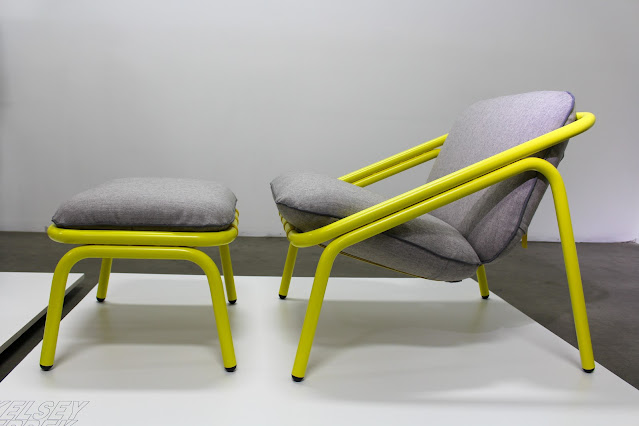The Purpose and Power of Color in Industrial Design (part 1)
(part 1. The following discussion on paper was presented and published for the IDSA National Conference 2006 in Austin, TX. I thought that I'd post it here for more to read. Please feel free to add comments and contribute to the discussion)
Color may be the most influential factor in the decision to buy, or not to buy. In Malcolm Gladwell’s book, Blink: The Power of Thinking Without Thinking, he suggests that when presented with a choice, the subconscious mind makes a decision within just a few seconds. Even before one rationalizes and investigates the choices, through rapid cognition the mind has already been made up. In relation to industrial design, that critical decision is the purchasing decision. Within those first few seconds the majority of the information that is available is visual information and one of the most dominant aspects of that visual information is color. So, considering this, the application of color and finish in design becomes much more important than one first thought.
The Power of Color
Color can dominate all other factors of a product designs success. One might not buy or drive a Porsche automobile if it were a hideous color, despite the quality of manufacture and engineering, prestige of the name, or the high performance. The same is true with home appliances, consumer electronics, soft goods, sports equipment, shoes, and practically every area of industrial design. A poor choice of color and finish can make or break the success of a product.
So why do industrial design students spend most of the time in school exploring form and usability, and color becomes a last minute after-thought? How many times have students presented a design, and instead of making a considerate decision on a color, have shown it in a rainbow of seven arbitrary colors? How can educators encourage their students (or design managers lead their design staff) to make the choice and application of color more intentional?
The main reason for this attitude is that students tend to view color as purely subjective decoration, and simply a matter of personal preference. However, colors chosen for a design can be meaningful, purposeful, and even functional. The goal is for students to understand that choosing color in design is an objective decision and that this consideration is as important as the function and form. By understanding the purposes of color, students can then practice how to apply them into their design.
This paper attempts to define and categorize the application of color as it can be used in industrial design. It differs from traditional discussion of color, which is usually from the viewpoint of the two-dimensional artist, because industrial design deals with functional three-dimensional objects. It offers examples of each category and suggestions for engaging design students in the meaningful use of color in industrial design. In this paper “color” refers to not just hue, but also value, chroma (saturation), and finish.
The following is a discussion of ten ways that color can be purposefully used in industrial design.
1. Color as association
Color can have high emotional and symbolic associations. It can be applied in design to conjure up soothing emotions or vivid memories to the user. These associations vary by culture, geography, and generation. These emotions seem to come from general associations the mind makes with that color, though long-term memories. These memories were developed throughout our lifetime through repetition or specific indelible events.
Figure 1. Cleanliness associations with the Apple iPod
Colors can also be meaningful by associated symbolism. This is particularly true with national flags. In the African country of
Figure 2. Symbolic associations in the flag of
The following are some common associations with colors in Western culture:
to be continued...
Next: Color as User Interface






Comments